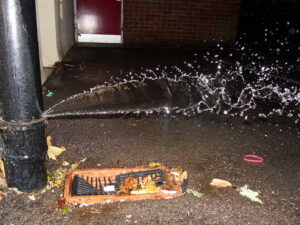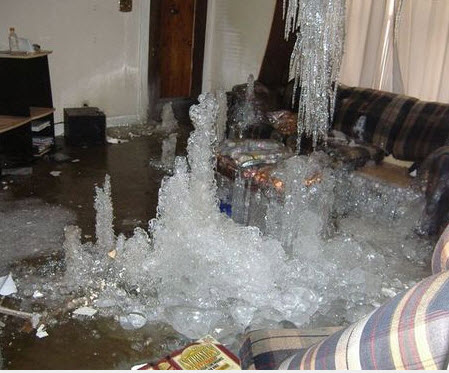Handling Water Damage After a Water Pipe Burst - Practical Steps
Handling Water Damage After a Water Pipe Burst - Practical Steps
Blog Article
In this article below you will discover lots of high-quality material around Water Damage Restoration Do s And Don t.

What should you do if a pipes bursts in your home? Do you want a mini-waterfall and also flooding in a location of your home? If you find yourself in this scenario, you have to act quick. The longer you wait, the extra serious the damages that can occur to your property. The clearheadedness is type in these occasions. For these factors, you require to discover just how to act in case of a ruptured pipes. Check out the complying with ideas below to help you act quickly since time is of the essence.
Turn off the Key Waterline Shutoff
The first thing to do? Close the shut-off valve. Search for the local shut-off valve to switch off the water in one certain area only. Go for the primary water line shutoff and also turn it off if you do not understand where the localized shut-off shutoff is. This step will certainly cut off the water promptly in your entire house. Typically, the major valve is found outside the home next to the water meter. If it's not there, you can additionally locate it in two places: in the cellar at eye degree or the 1st floor on the ground. Generally, builders placed the shut-off valve in the main ground degree restroom or right alongside it.
Call Water Damages Restoration Pros for Help
After shutting the water source, call the professionals for assistance. With their professional assistance, you can avoid much larger water damage including warped baseboards, loose floor tiles, or harmed frameworks.
Paper the Damages For Insurance coverage
While you're waiting on the pros to show up, get some documentation of the damages triggered by the errant pipeline. Take pictures and video clips of whatever. Do close-up shots of the damaged prized possessions as well as spots. Your documents will serve as proof for your house owner's insurance. Maintaining proactive with this scenario helps you to sue for coverage, which will better support you as well as your family members to get back on your feet.
Recover Things That Can Be Saved
Take a look at the harmed things and also take out the most vital ones from the pile as soon as you're done taking images. Dry them off in a dry/warm place away from the damaged location and also try to protect them as high as you can. Drag as much wetness as you can to the material so it can begin to dry.
Beginning the Drying Refine
You require to begin the drying process as soon as possible. Thankfully, the water from your waterlines is currently tidy so you don't have to worry about sewer water. The moving water may have interrupted the dust and also debris in your rugs and floorboards. In this situation, placed some gloves on as well as begin some damage control. Use pails to dispose out the water. Remove as much water as you can from the surface areas with old towels. Turn on an electric follower or open your home windows to promote air flow. These actions will certainly hasten to dry as well as prevent mold and mildew and also mold growth.
Professionals are the only individuals certified to evaluate appropriately and deal with the burs pipes as well as succeeding damage. They normally offer silent red flags like bubbling paint, water discolorations.
What should you do if a water pipeline bursts in your home? For these factors, you require to learn exactly how to act in the occasion of a ruptured water pipeline. After closing the water source, call the specialists for assistance. With their specialist aid, you can prevent a lot bigger water damage including distorted baseboards, loose ceramic tiles, or harmed frameworks. Luckily, the water from your waterlines is currently tidy so you do not have to fret regarding drain water.
How to Handle a Burst Pipe and Minimize Damage
Steps to Take Ahead of Time
If you own property in an area that experiences cold weather, you need to be aware of seasonal maintenance tasks that will help you protect your property as the weather changes each year. One of the most important steps is to winterize your pipes to ensure they won't freeze or burst when the temperature drops. This includes action items like insulating any exposed pipes, detaching garden hoses and covering outdoor faucets. If the weather gets cold enough, you may even consider leaving a faucet dripping or opening cabinet doors during the coldest parts of the day.
No matter how prepared you might be, accidents and emergencies still happen. You'd be wise to set up a savings account specifically for your property so you have a "rainy day" fund set aside for unexpected expenses. All homes regardless of age, location or condition will inevitably need some form of emergency repair.
Steps to Take for Frozen Pipes
A frozen pipe will not necessarily burst, so if you can catch a frozen pipe early on, you could save yourself a major headache. When your area experiences frigid temperatures, be sure to check your plumbing and keep an eye out for warning signs like faucets only releasing small amounts of water or toilets not refilling when flushed. If you do run into one of these issues, you're likely dealing with a frozen pipe.
If this happens, your first step should be to cut off the water supply to that section of the plumbing. Expanding and freezing water can quickly cause damage. Even if the water supply is shut off, you will likely still deal with some leaking from the water that defrosts after the pipe has thawed. Be prepared with a mop, bucket and/or towels to quickly soak up any excess water.
In order to thaw a frozen pipe, you can use a space heater, infrared or incandescent heat lamp, or even a hairdryer to warm up the frozen area. Heat tape is also an option and should be used according to manufacturer instructions. Do not use any sort of open flame to thaw frozen pipes, as it poses a major fire hazard and can damage your pipes further.
Steps to Take for a Burst Pipe
Water damage claims are the second most common insurance claim in the U.S. When you're dealing with a frozen pipe, the water continues to expand as it freezes, which creates pressure that can cause a pipe to burst. When this happens, the crack or leak in the pipe allows water flow from the pipe to enter your home where it shouldn't. If a pipe does burst, you need to act quickly to mitigate property damage and repair cost.
Your very first step should be to shut off your main water supply to minimize flooding typically the most expensive damage to address. Once you've shut off the water supply, make sure you identify the entire area that has been impacted by the leak. Remove as much water as possible as quickly as possible using a mop, sponges, towels or a shop vacuum or wet/dry vacuum. To prevent long-term damage due to moisture build-up, run a dehumidifier or fan in the affected area. Contact a licensed plumber to ensure the pipe is correctly repaired before running any water to that section of the home again. Burst pipes and the associated water damage are something you absolutely want to avoid as a property owner. If you've had to learn your lesson the hard way, don't let yourself get caught in a similar situation during the next spell of cold weather. The best way to deal with frozen or burst pipes is to prevent them in the first place proactive winter maintenance will save you time, money and a whole lot of stress.

We were brought to that write-up about Rules For Handling Water Damage through a friend on our other blog. Kindly take a moment to share this blog post if you liked it. Thank-you for your time invested reading it.
Dial, we deliver! Report this page